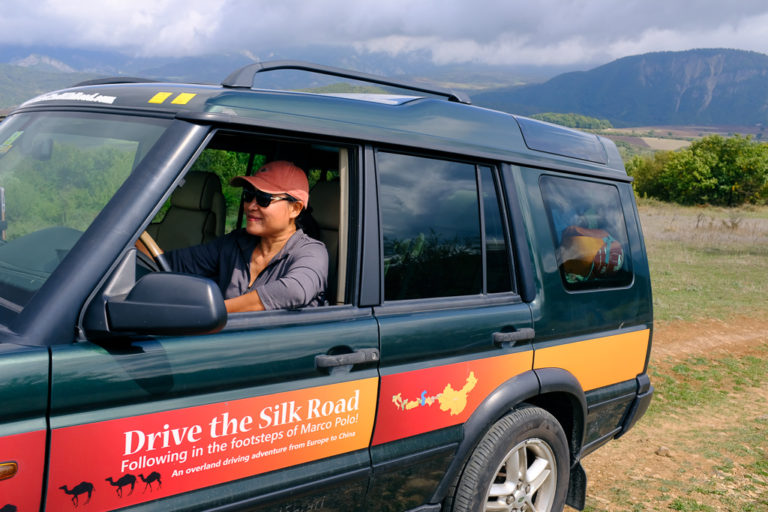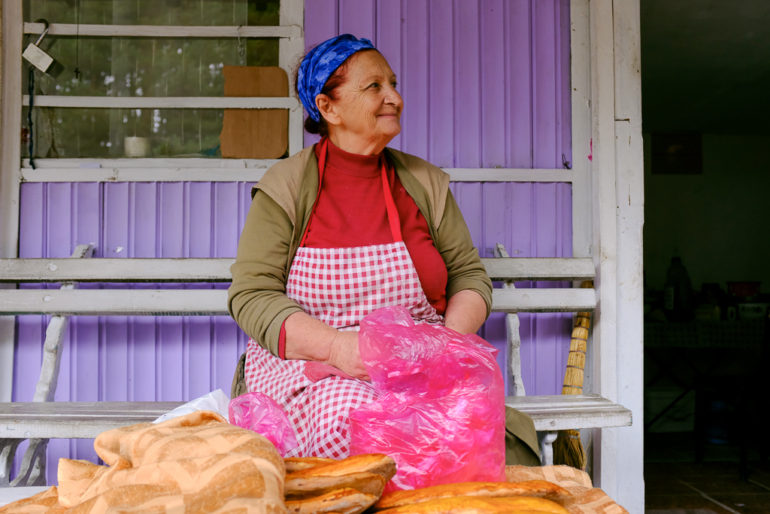We landed in Trabzon, a small city near the Black Sea in northeastern Turkey. Almost immediately, we saw the Land Rover that was parked outside the airport, waiting for us. An energetic woman ran up to us and gave us a warm hug. “Let’s go,” she said, motioning to her car.
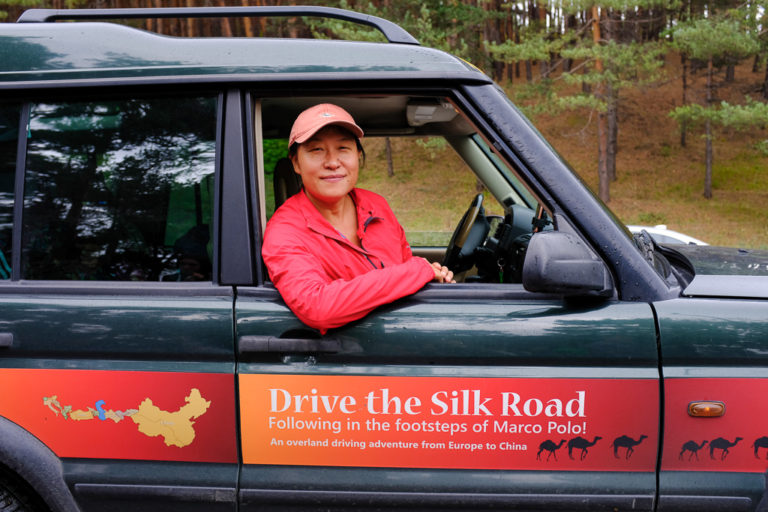
Yue Chi has been driving the Silk Road, from Western Europe to China, for over 12 years. She started her company Overland Adventures with her husband David Visagie, who she met while trekking through the Sahara Desert. During that trip, they connected quickly, and ended up traveling together. (As she joked, “He needed a cook, I needed a mechanic.”)
But their partnership was just beginning. They shared a dream of driving all over the world, and decided to use their unique strengths to make it happen. As a history major who couldn’t keep still, Yue was always interested in the Silk Road, and she began to map out an itinerary and research the sights for each stop. David, on the other hand, used his mechanic skills to prepare the Land Rovers that would be used on the road.
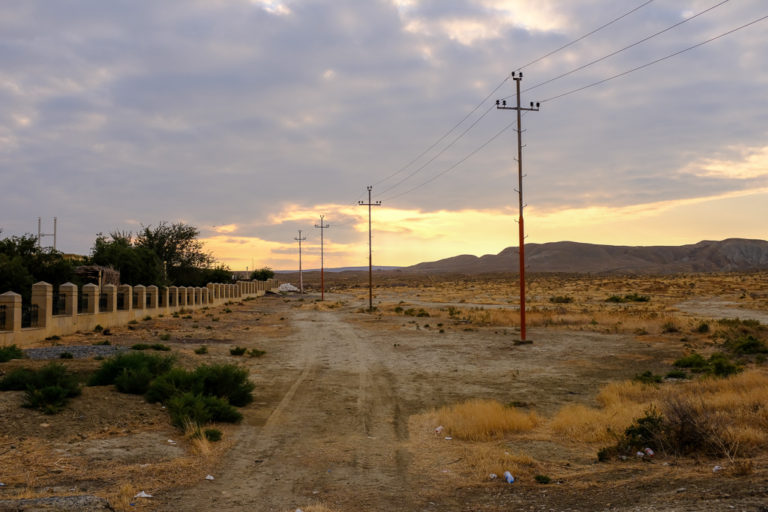
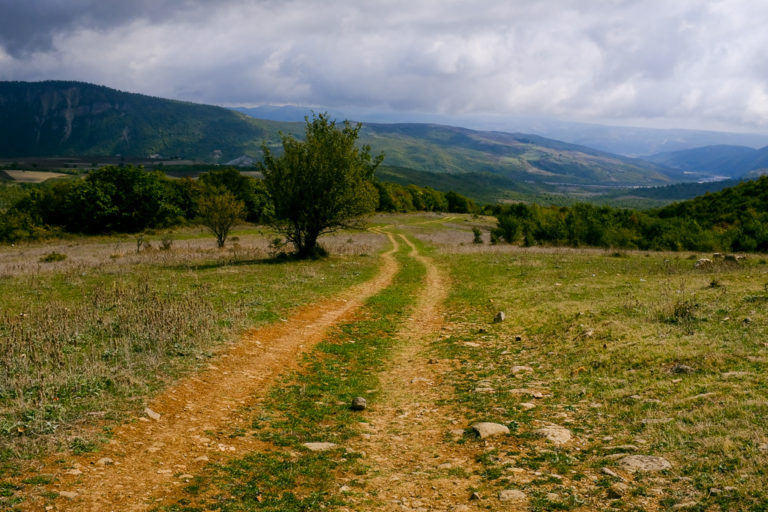
Yue started giving talks to share her idea. One teacher named Tara was so inspired that she mailed Yue a check with a note: “When you start your trip, count me in. I want to be the first one there.” That was the momentum and encouragement Yue needed to get started, and in 2007, Overland Adventures took off.
Fast forward more than a decade, and Yue’s still going. When we first connected with her, she told us she had two spare seats in her Land Rover for a portion of her trip, and invited us to join for the ride. The journey would take three months, starting in Istanbul and ending in Ho Chi Minh City: driving across 11 countries and more than 25,000 kilometers. We’d be joining for only two weeks, traveling with Yue and six others from Turkey to Azerbaijan.
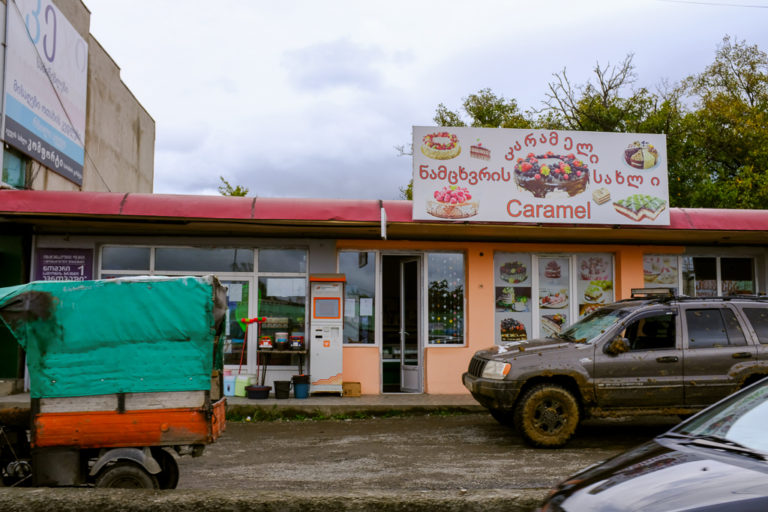
We didn’t know what to expect from the Silk Road, considering it carried so much history. Formerly, it was a network of international trade routes that connected Europe to Asia, where camel caravans would spend months or years carrying spices and silk back and forth through the desert trails and mountain paths. Since the route hasn’t been used for trade in over 500 years, we wondered what we would find there, and what meaning it would hold today.
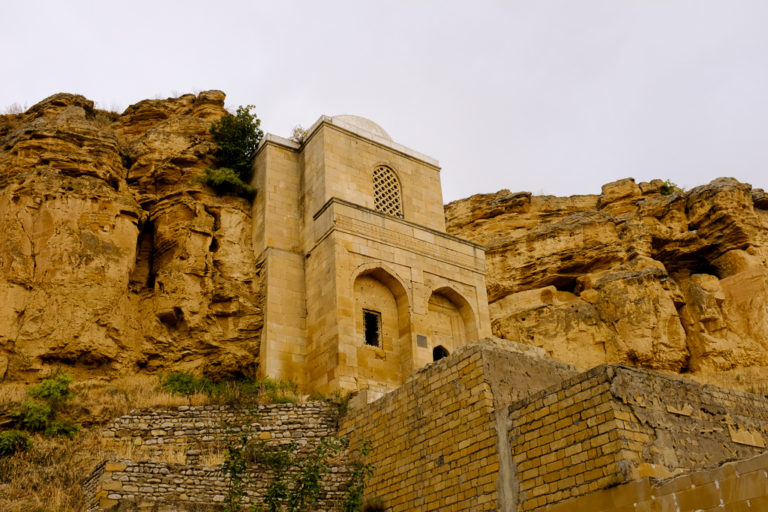
As we drove through Turkey and the Caucasus countries of Georgia, Armenia, and Azerbaijan, the magic of the Silk Road began to reveal itself to us. Traveling overland meant that we had freedom and flexibility to explore the Silk Road as a continuous route, rather than as a series of destinations. We watched the landscape evolve in front of our eyes, and witnessed sights beyond the main cities. It soon became clear to us that beauty was found in the in-between sights and experiences.
We drove past horses in the mountains and weaved through cows along the road.
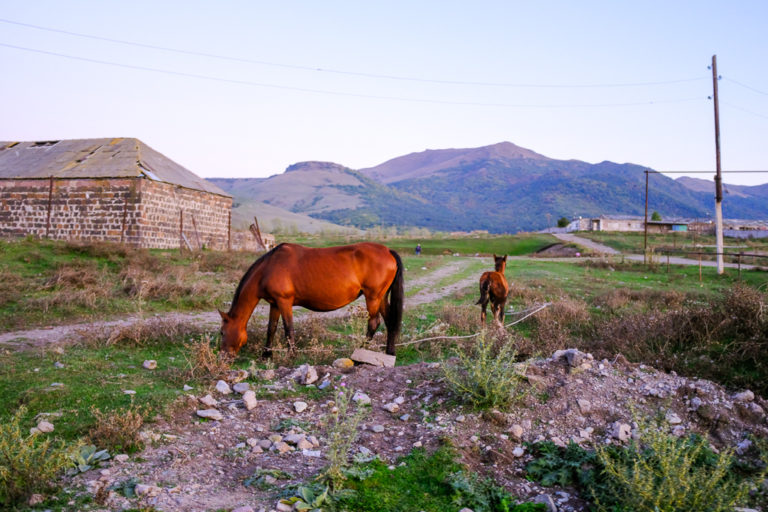
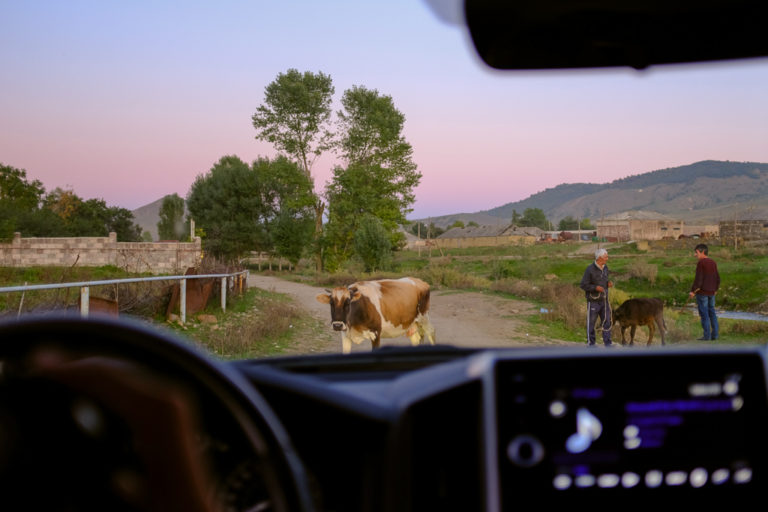
We stopped at roadside stands, eating flatbread-like Zhingyalov hats wrapped in newspaper or meat skewers cooked on a grill next to the highway, as smoke wafted past the cars that drove by. We often packed leftovers for the street dogs, and pulled over to feed hungry ones outside of town.
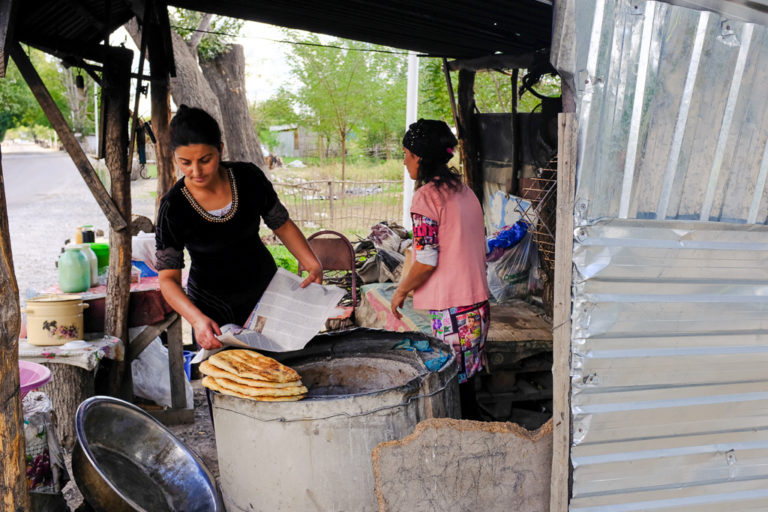
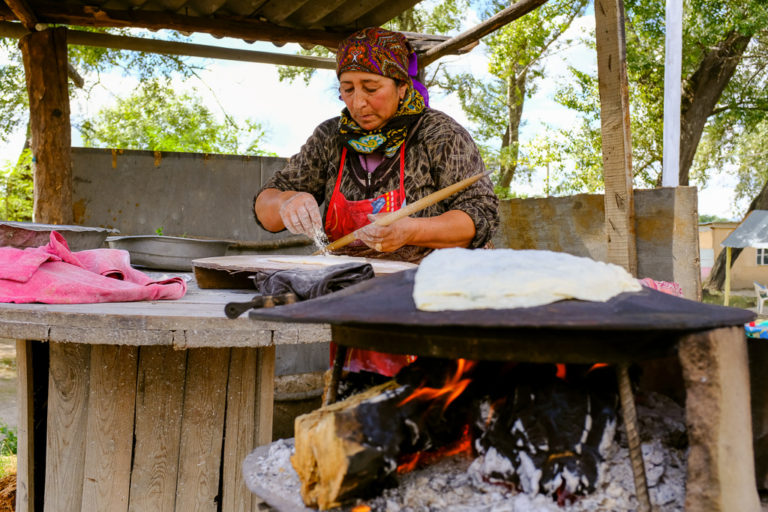
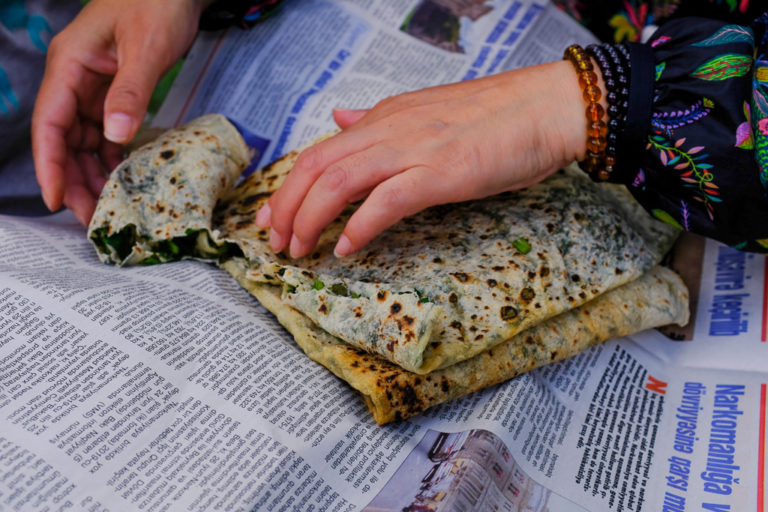
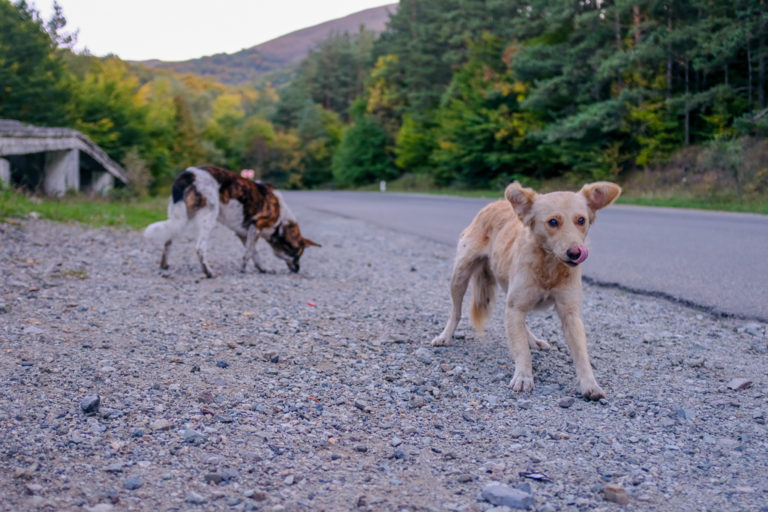
One time, we saw a breathtaking mountain view in rural Azerbaijan, and immediately parked the car. We ran across the road and hopped over a fence, feet covered in dew and dirt from the grass. Deeper into the meadow, we encountered a local farmer, who allowed us to photograph his cows. Afterward, we jumped back into the car, and kept going.
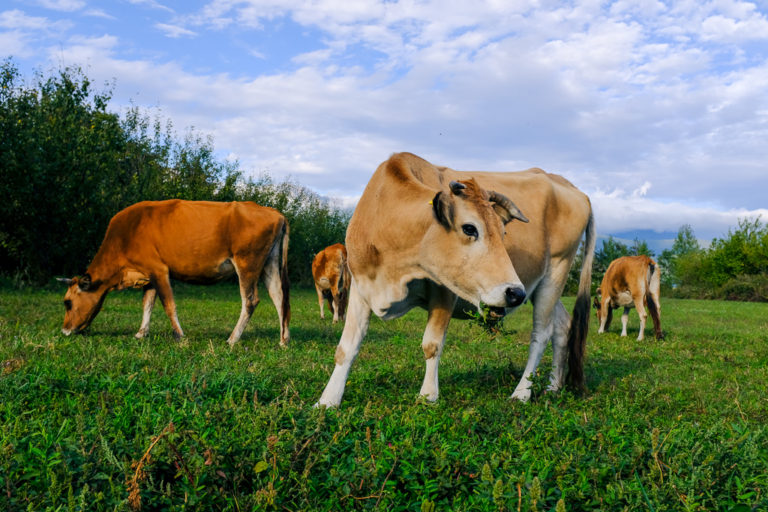
With the spontaneity of overland travel, we never knew what we would find or what we would encounter even from just a brief rest stop. We saw people dancing to Turkish folk music at a monastery, a baptism in an old Armenian church, and lucky doves being released in Gyulagarak. We drove past abandoned Soviet-era buildings and a man herding dogs in the grasslands. One day, when our car broke down, we trekked up a road to a park in Azerbaijan, where we discovered petroglyphs on rocks and even cats in trees.
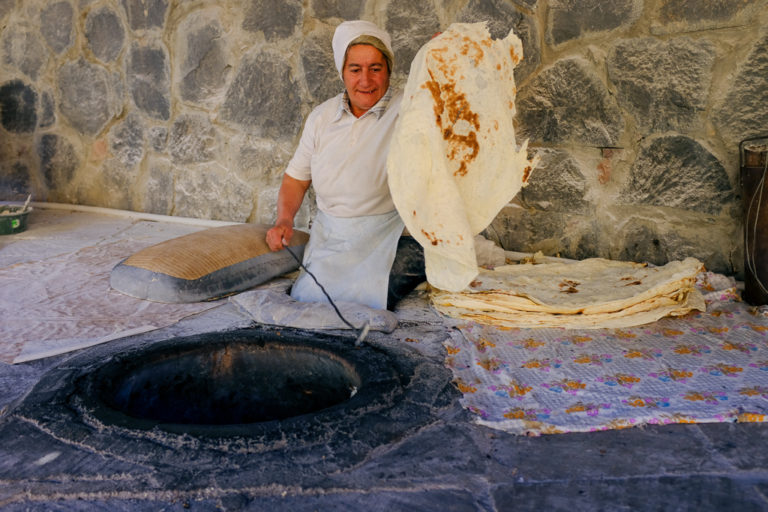
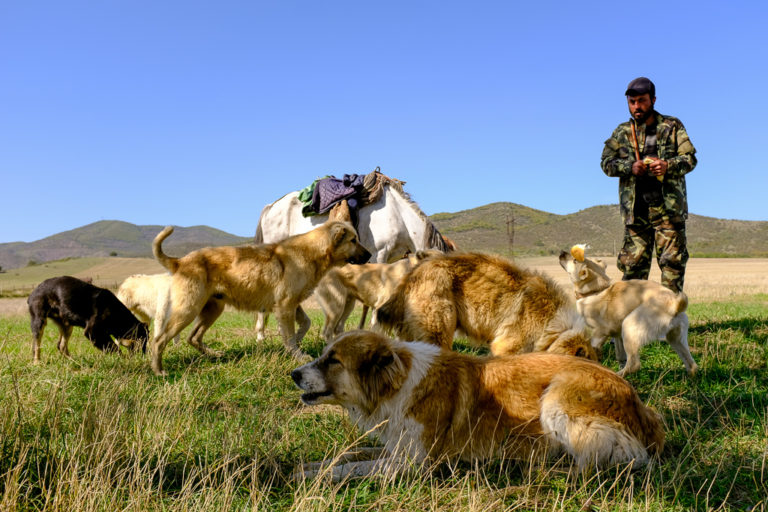
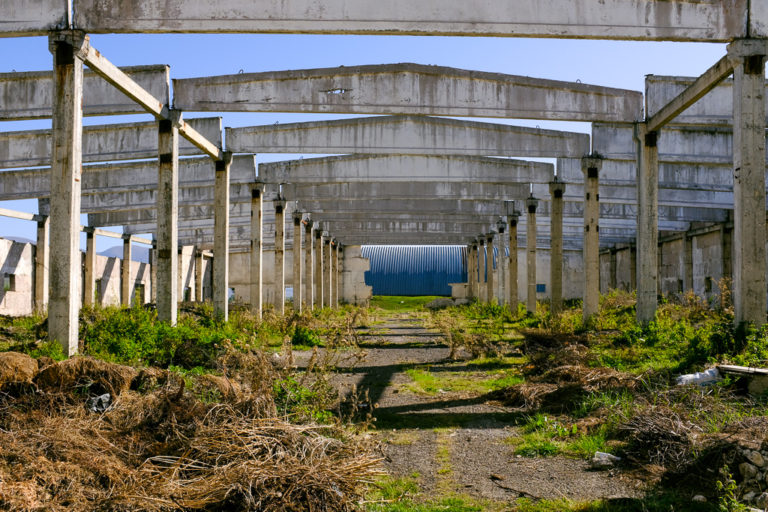
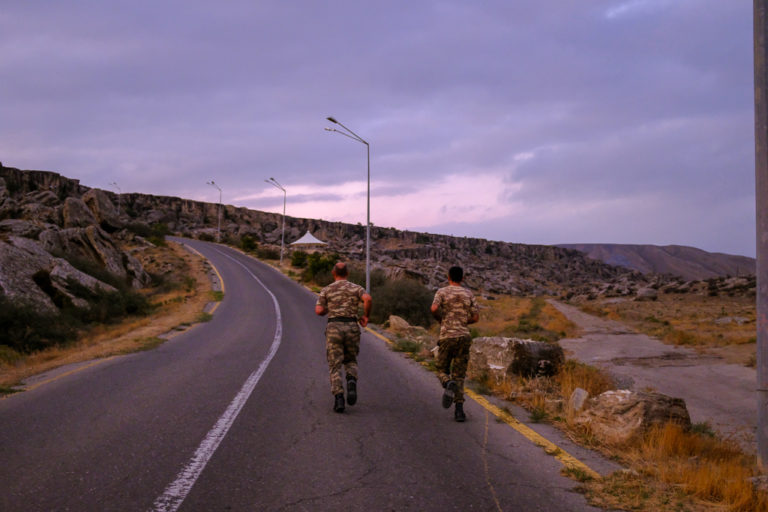
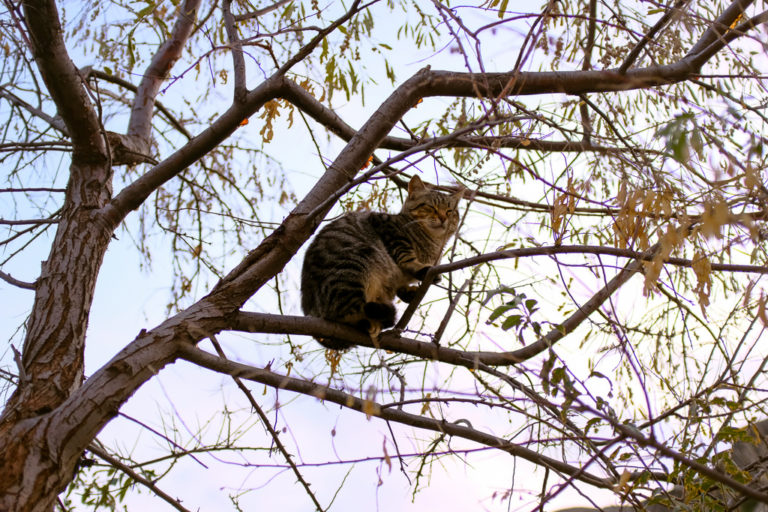
We quickly realized that the Land Rovers were quite necessary. Traveling through remote areas, we frequently drove on unmarked roads to look for interesting places that were hidden away. Once, we drove a winding and bumpy path to find a mud volcano in the middle of the night. There were only two other people there, backpackers from Finland who had set up a tent to camp out for the night, and came up to us to bum a cigarette. We chatted, sharing stories and itineraries, with the sounds of mud bubbling behind us.
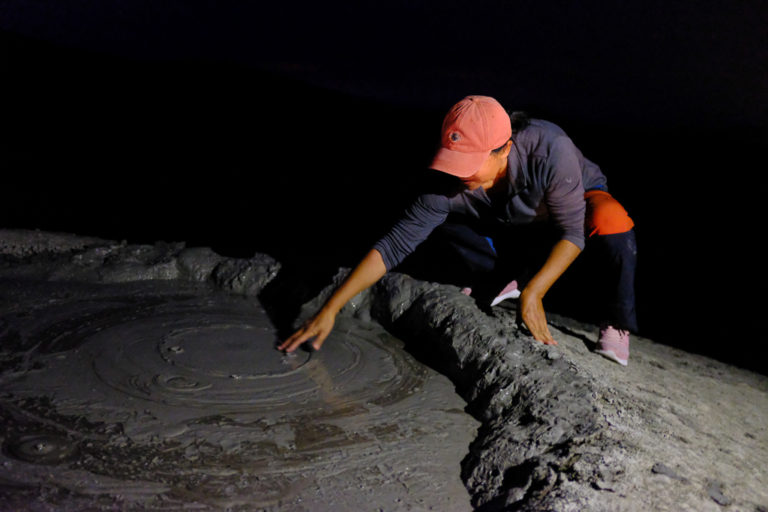
It was these exchanges with people we met along the way that showed us the meaning of the Silk Road as a journey of exchange, of carrying your culture with you and passing it along while also learning from those you meet along the way.
In the Turkish city of Rize, we visited a tea garden, where we noticed a construction worker who was wearing an old Turkish Land Rover t-shirt. It was sprinkled with sawdust and sweat, but as the driver and owner of multiple Land Rovers, Yue was delighted. She started chatting with him, exclaiming how much she loved his shirt and pointing at her car, and the man laughed, amused as well. For fun, they agreed to trade shirts. Yue whipped out her luggage in the parking lot, dug out a t-shirt of her own, and the man went to change. They both ended up with lovely souvenirs for the day.
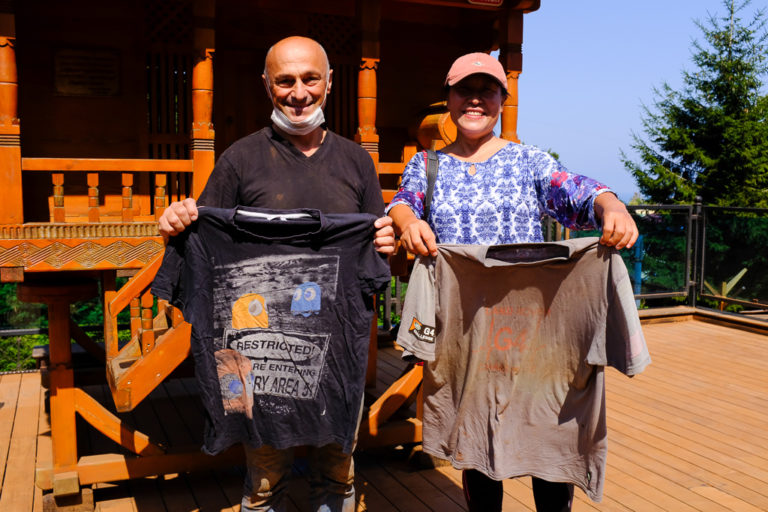
Since Yue began traveling the Silk Road a decade ago, she’s been able to sustain lasting relationships in cities and towns all over the region. While we were in Sheki, a small city in northwestern Azerbaijan, we went bowling with a young man whom Yue has known for several years. It’s an unlikely friendship: he speaks no English, and she speaks no Azerbaijani. Despite not sharing a common language, they both enjoy hiking, and he invited her to walk a trail with him when they first met. She chuckled at how she was alarmed when he packed a machete and blanket for the hike, then found out that the machete was used to clear parts of the overgrown path, and the blanket was for setting up a picnic at the viewpoint. They later decided to go play at a bowling alley, and they now have a tradition of going to eat and bowl whenever she drives through Sheki.
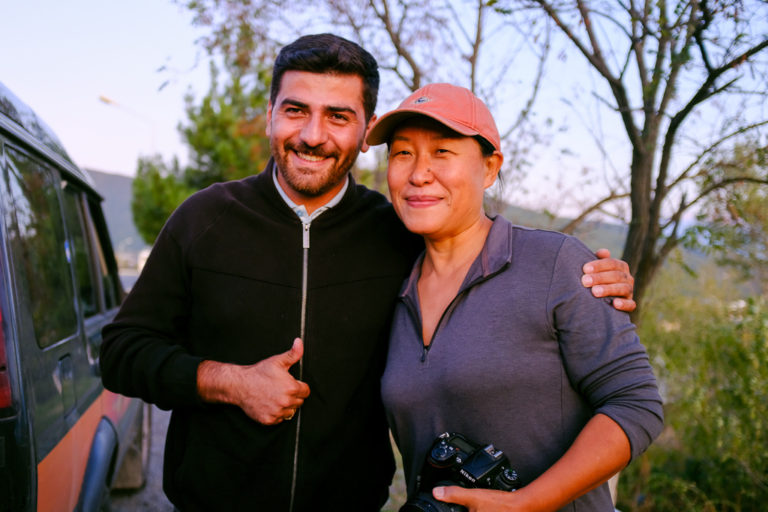
During our two weeks on the Silk Road, we found ourselves constantly inspired by Yue, a woman who is truly living life on her own terms. She describes herself as a Chinese-Canadian person, married to a South African, with a German stepson. She is a combination of everywhere she goes and everyone she meets, and explains that she’d prefer not having a single passport or home country because she feels like she belongs everywhere at this point. Yue says that if she had more money, she’d spend it on travel anyway—and with Overland Adventures, she gets to do it for a majority of the year (besides the Silk Road, she also does driving adventures around Africa), and with people she considers friends.
In the mountains near the wine-growing Georgian town of Sighnaghi, we helped Yue film a 40-year high school reunion video. With rolling green hills and her Land Rover in the background, she apologized to her classmates that she wouldn’t be able to make it, and it struck us that she has really lived out her dreams. Her unconventional path may seem surprising to some, but she admits with a smile that her classmates always knew she was wild.
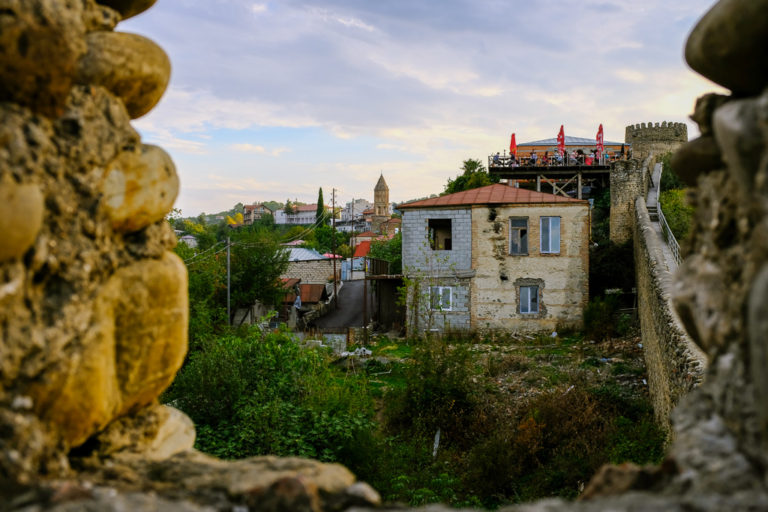
To us, the Silk Road that we found embodied adventure and beauty. It was the small, unexpected sights you might never again encounter, the warm and hospitable people just as eager to share a piece of themselves with you as you are with them. It was an intense and rewarding experience, one that will stick with us for years.
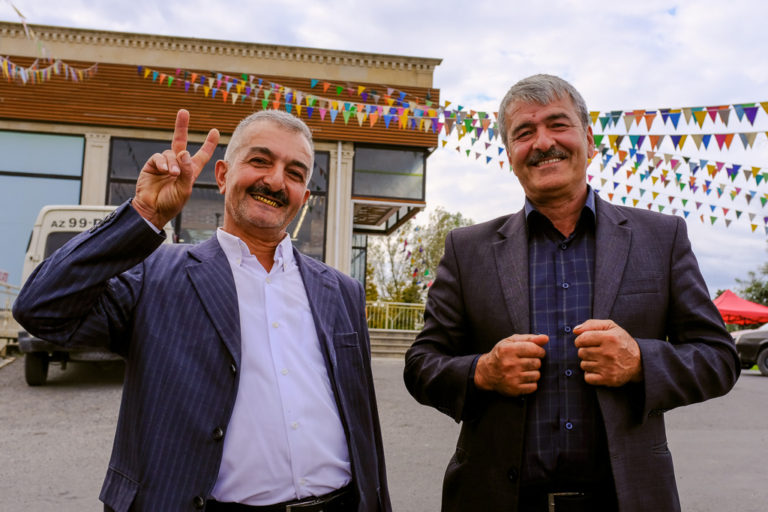
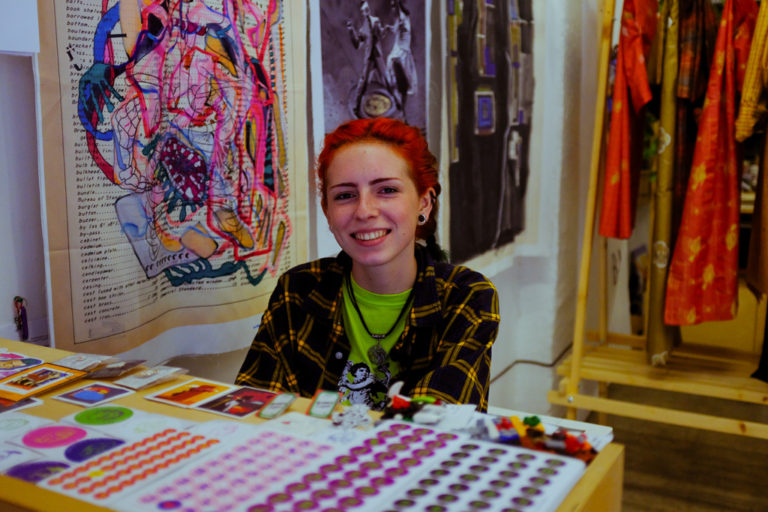
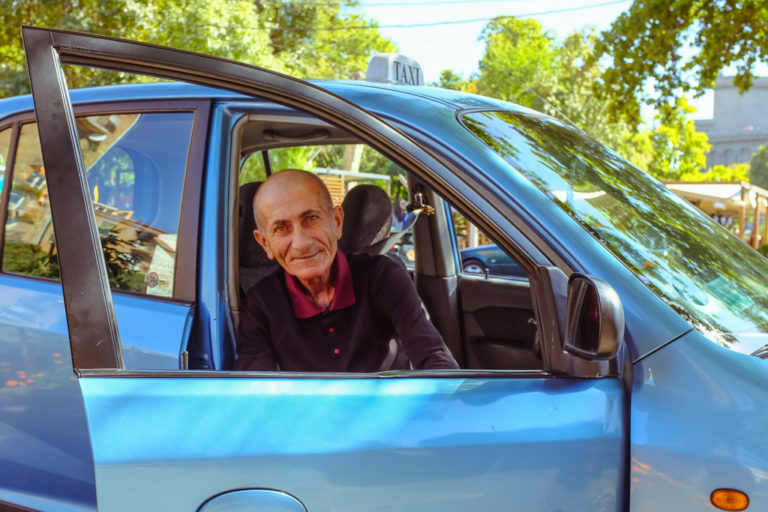
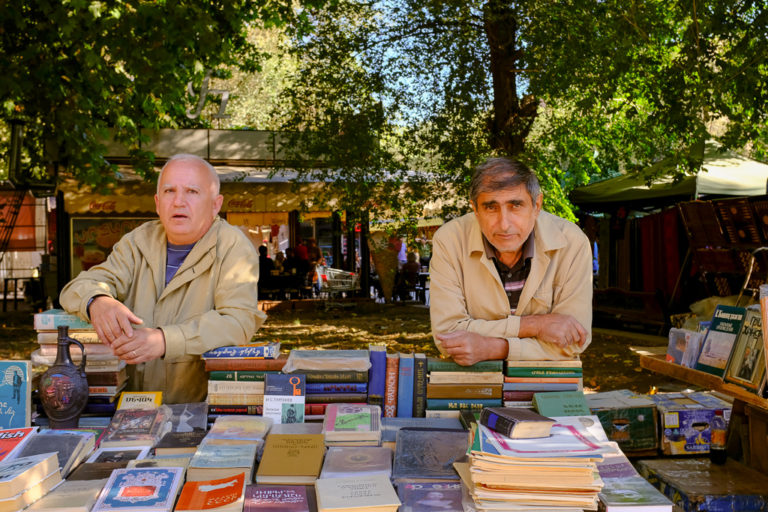
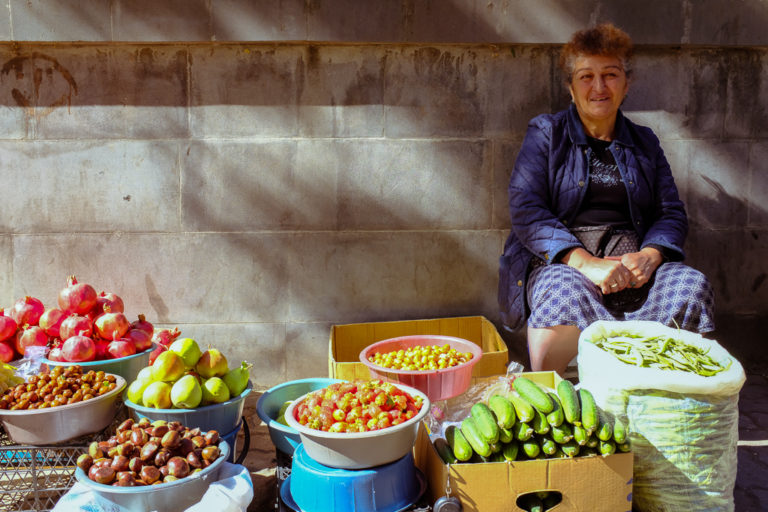
In Baku, Azerbaijan, we parted ways with Yue. And the Land Rover continued on toward the Caspian Sea, where they would board a cargo ship and sail to Turkmenistan. Thousands of kilometers left to go.
